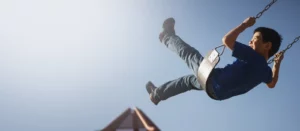Dyspraxia Unveiled: What’s Behind the Term?
Dyspraxia may not be as commonly discussed as ADHD or autism, but it’s a condition that affects many children and can have a significant impact on their daily lives. So, what is dyspraxia, and how can you help a child who has it? Let’s dig in.
The ABCs of Dyspraxia
Dyspraxia is a developmental disorder that affects motor skills, making it difficult for children to perform tasks requiring coordination and movement. This can range from simple actions like tying shoelaces to more complex activities like riding a bike.
The Root Causes: What Triggers Dyspraxia?
The exact cause of dyspraxia is still unknown, but it’s believed to be related to how the brain processes information. It is not a result of muscle weakness or paralysis but rather a neurological issue.
The Signs: Red Flags to Look Out For
If you suspect your child might have dyspraxia, keep an eye out for these symptoms:
- Clumsiness: Frequent falls and bumps.
- Difficulty with Fine Motor Skills: Such as holding a pencil.
- Speech Issues: Like slow language development.
- Trouble Learning New Skills: Despite repeated practice.

Diagnosis: The First Step to Support
If you notice these signs, here’s your action plan:
- Consult a Pediatrician: For an initial assessment.
- Occupational Therapy Evaluation: To assess motor skills.
- Educational Psychologist: For a comprehensive understanding.
Treatment: The Path Forward
While there’s no cure for dyspraxia, interventions can make a world of difference:
- Occupational Therapy: To improve motor skills.
- Speech Therapy: For any related speech issues.
- Educational Support: Special accommodations at school.
The Emotional Aspect: More Than Just Motor Skills
Dyspraxia doesn’t just affect physical abilities; it can also impact self-esteem and social skills. Emotional support and understanding are crucial for helping children navigate the challenges they face.

The Silver Lining: Strengths and Talents
Many children with dyspraxia have unique strengths, such as creativity and problem-solving skills. Focusing on these can help build confidence and a sense of accomplishment.
Navigating Daily Challenges: Strategies for Parents and Teachers
Understanding dyspraxia is only the first step. Once a child is diagnosed, parents and educators play a crucial role in providing the necessary support. Here are strategies to help children with dyspraxia overcome daily challenges:
1. Structured Routines and Clear Instructions
Children with dyspraxia often benefit from structured routines and clear, concise instructions. Establishing a predictable daily schedule can provide a sense of security, making it easier for them to navigate their day. Break down complex tasks into smaller, more manageable steps, offering guidance at each stage.
2. Adaptive Tools and Technology
Incorporating adaptive tools and technology into daily activities can significantly aid children with dyspraxia. Tools like pencil grips, specialized keyboards, or voice-recognition software can support their fine motor skills and assist with tasks that might otherwise be challenging.
3. Multisensory Learning Approaches
Engaging multiple senses in the learning process can enhance comprehension and skill development. For example, using tactile materials during lessons or incorporating movement into learning activities can reinforce concepts and improve coordination. This multisensory approach caters to different learning styles and can be particularly beneficial for children with dyspraxia.
4. Collaboration Between Home and School
Open communication and collaboration between parents and teachers are essential. Sharing insights about the child’s strengths, challenges, and successful strategies can create a unified support system. This collaboration ensures that the child receives consistent assistance both at home and in the educational setting.
5. Social Skills Development
Dyspraxia can sometimes affect social interactions. Encouraging social skills development is vital for fostering healthy relationships. Implementing activities that promote teamwork and communication can aid in the development of these essential skills. Schools can also provide a supportive environment through inclusive initiatives and awareness programs.
6. Celebrating Achievements, Big and Small
Recognizing and celebrating achievements, regardless of size, is crucial for building a child’s self-esteem. Whether it’s mastering a new motor skill or excelling in a creative endeavor, positive reinforcement contributes to a child’s sense of accomplishment and motivates continued effort.
Breaking Stereotypes: Shifting Perspectives on Dyspraxia
Beyond providing practical support, it’s essential to challenge stereotypes and misconceptions surrounding dyspraxia. This involves creating awareness within communities and educational institutions. Dispelling myths about the condition fosters a more inclusive environment where children with dyspraxia can thrive.
Embracing Diversity: Dyspraxia in the Classroom
Inclusive education is a cornerstone of creating an environment where every child, regardless of their abilities, feels valued and included. Teachers can undergo training to better understand dyspraxia and implement inclusive teaching methods. This ensures that classrooms cater to diverse learning styles, allowing every child to reach their full potential.
Future Perspectives: Research and Advancements
Ongoing research into the neurological aspects of dyspraxia is paving the way for a deeper understanding of the condition. Stay tuned for updates on emerging interventions and educational approaches that continue to evolve, offering new possibilities for children with dyspraxia.
In the next section, we will delve into personal narratives and success stories, shedding light on the resilience and achievements of individuals living with dyspraxia. Understanding the human side of the condition is integral to fostering empathy and creating a supportive community.
Personal Narratives: Triumphs Amidst Challenges
1. Overcoming Obstacles: Real Stories of Resilience
Sharing real stories of individuals who have triumphed over dyspraxia can provide inspiration and hope. These narratives highlight the diverse paths to success and emphasize that each child’s journey is unique. From academics to the arts, these stories showcase the potential for greatness that lies within every child, regardless of their challenges.
2. Family Perspectives: Navigating the Journey Together
Dyspraxia doesn’t just impact the individual diagnosed; it also shapes the experiences of their families. In this section, we’ll explore how families navigate the journey together. From fostering open communication to finding strength in shared experiences, these insights offer a holistic view of the impact of dyspraxia on family dynamics.
3. From Classroom Challenges to Career Success
Transitioning from school to the professional world can be daunting for any young adult. For individuals with dyspraxia, navigating this transition may present unique challenges. This section will explore success stories of individuals who have not only overcome the hurdles of dyspraxia in their academic journey but have gone on to excel in their careers.
Advocacy and Awareness: Shaping a Supportive Society
Advocacy plays a pivotal role in shaping a more understanding and supportive society for individuals with dyspraxia. In this section, we’ll delve into ongoing initiatives, both at a grassroots level and on a larger scale, aimed at raising awareness, breaking down stigmas, and fostering inclusivity.
1. Community Support and Initiatives
Communities play a crucial role in supporting individuals with dyspraxia. We’ll explore local initiatives, support groups, and community-driven efforts that provide a network of understanding and encouragement. These grassroots movements contribute significantly to creating a more inclusive environment for children and families affected by dyspraxia.
2. Educational Reforms: Bridging Gaps in Understanding
Advocacy within educational institutions is essential for fostering an environment where children with dyspraxia can thrive. This section will examine ongoing efforts to integrate dyspraxia awareness into teacher training programs, school curricula, and educational policies. By bridging gaps in understanding, we can create classrooms that cater to the diverse needs of every student.
3. Media Representation: Changing Narratives
The media plays a powerful role in shaping public perceptions. We’ll explore how accurate and positive representation of dyspraxia in media can contribute to breaking down stereotypes and fostering a more empathetic society. From documentaries to fictional portrayals, media can play a significant role in dispelling myths and promoting understanding.
Looking Ahead: The Road to Continued Support
As we navigate the complexities of dyspraxia, it’s crucial to keep an eye on future developments. Ongoing research, evolving interventions, and changing societal attitudes all contribute to shaping the landscape for individuals with dyspraxia. In the next section, we will explore what the future may hold for those affected by this condition and how continued support can make a lasting impact.
Conclusion: Nurturing Potential, Fostering Inclusion
In our exploration of dyspraxia, we’ve uncovered the intricate challenges faced by children with this developmental disorder and the multifaceted strategies that can support their growth. From understanding the root causes to implementing interventions, we’ve delved into the realms of diagnosis, treatment, and emotional well-being.
The journey with dyspraxia doesn’t end with awareness; it extends into the realms of personal narratives, family dynamics, and societal attitudes. Real stories of triumph over adversity showcase the resilience of individuals, emphasizing that dyspraxia is not a roadblock but a unique path requiring tailored support.
Advocacy and awareness, both at the community and institutional levels, play pivotal roles in creating an inclusive society. From grassroots initiatives to educational reforms and accurate media representation, every effort contributes to breaking down barriers and fostering understanding.
Looking ahead, the landscape of dyspraxia support is dynamic. Ongoing research offers the promise of new insights and interventions, while societal shifts in perception contribute to a more empathetic and accommodating environment. As we continue on this journey, it is essential to celebrate achievements, both big and small, and recognize that every step forward is a triumph.
In nurturing the potential of children with dyspraxia, we shape a future where inclusivity is not just a concept but a lived reality. By fostering understanding, providing tailored support, and championing the strengths of individuals, we contribute to a society where every child, regardless of their abilities, can thrive.
The road ahead is one of continued collaboration, advocacy, and education. Together, we can create a world where dyspraxia is not a limitation but a unique thread in the rich tapestry of human diversity, weaving stories of resilience, achievement, and inclusivity.
Next Steps
If you’re finding this content useful and want to delve deeper into the world of children’s health, consider subscribing to our newsletter. If you have concerns about dyspraxia or other developmental issues, feel free to book an appointment with Dr. Michael Nwaneri. We’re here to help, no strings attached.




